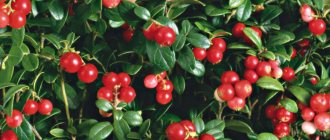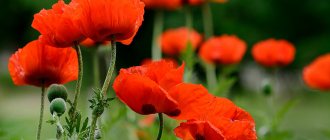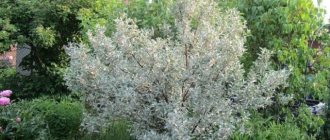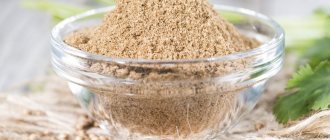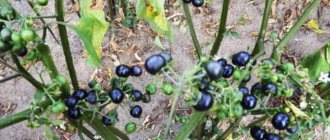Finely dissected, brightly colored leaves, decorative bark and a variety of autumn colors make maples ideal plants for creating a unique look in your garden. All species listed below are deciduous. They vary in size from large (above 30 m) trees to small shrubs no more than 1 m in height.
Most of them grow in warm temperate areas of the globe. Some species, in particular “Acer palmatum” (Finger maple) and its cultivars, suffer from frosts at a young age. They grow well in rich, moist but well-drained soil in shady, sheltered areas.
Maples are easily identified by their palmate leaves and the red and green winged fruits that appear in summer and fall. The leaves usually have five rounded or pointed lobes. Japanese maples, known as “A. japonicum" and "A. palmatum”, are prized for their graceful appearance and outstanding red and yellow autumn color. Many slow-growing Japanese cultivars are suitable for small gardens in warm temperate areas. Decorative bark distinguishes some species in winter. A group of maples with “snake” bark, including “A. capillipes” (K. snake-barked), “A. pensylvanicum" (K. Pennsylvanian) and "A. davidii” (K. David), has peeling bark. New cortex “A. griseum” (K. gray) is light brown, and young trunks of A. palmatum “Sango-kaku” have coral-red bark.
Inflorescences of light yellow and green flowers 2.5-15 cm long appear on all maples, sometimes even before the leaves, but for the most part they are not very decorative.
Types and varieties of plants, appearance
Common maple is a woody plant belonging to the Sapindaceae family. The tree can be about 40 m in height, which depends on the type of maple and the conditions in which it grows. In most cases, trees with a height of 10-15 m are found. The trunk of the maple is thin, and the bark is light brown, brown or gray in color. The maple crowns are wide and dense, while the leaves are quite beautiful, which is a distinctive feature of maples. The shape, appearance, color of maple leaves, as well as the fruits of the plant differ, depending on the type and variety of the tree.
In nature, there are 160 species of similar plants, all of which differ in appearance. Most types of maples grow in the northern part of the world, while some trees are ornamental and are grown exclusively for landscaping garden areas.
The most popular varieties of maple are:
- American or ash-leaved;
- platanofolia or holly;
- Manchurian;
- Canadian maple;
- riverside;
- Tatar;
- Japanese;
- Chinese;
- field;
- green-skinned;
- red or red-leaved and many others.
In addition to the fact that there are Chinese, holly, ash and other types of maple, the flowering tree is also usually classified into different varieties. Some varieties of the plant have red leaves, while another maple may not look at all like other species of the family. Also, each variety has different maple fruits.
The following maple varieties are popular:
- Crimson King;
- drummondii;
- Atropurpurea;
- Flamingo;
- Globosum;
- Royal Red and many others.
Where and how does it grow
Maple is predominantly found in the Northern Hemisphere, but maple trees can occasionally be found in the tropics. In most cases, maple prefers mixed forests; however, pure maple forests are not formed.
For maple, illuminated areas are the most comfortable, so American, Canadian or any other maple trees can most often be seen on the edges or outskirts of the forest. The structure of maple may also differ. Some species grow quite tall trees, and their height is more than 20 m, while the leaves are densely located on the branches. Other types of maples grow as dense and low shrubs.
Seed selection
It will take a lot of effort to grow a blue maple bonsai. But having received the azure miracle, everyone will forget about the time spent.
Selecting seeds of excellent quality is important. They are purchased in special flower shops, or you can order them online to China.
Benefit
Red maple and other types of similar trees are not only beautiful, they are also useful. Maple seeds, sap and other parts of the tree contain a large number of substances beneficial to the human body. From maple fruits you can prepare decoctions and infusions used to treat various diseases. Maple is especially useful in densely populated cities, as it helps neutralize benzene vapors and heavy metals that trap maple leaves.
Japanese maple in landscape design
Its low growth allows it to be successfully grown in containers. The advantage of this method is that the container can be moved from one place to another, saving it from the sun or removed for the winter, and also from time to time placed in different parts of the garden.
Pots are also placed on stands to make them more visible. Need I mention that the slow-growing tree is used to create bonsai. They are formed by special cutting, using wire and other techniques.
Read also: Gardenia indoor care at home photo
The home location of the maple dwarf is favorable for indoor air. It moisturizes, gives oxygen and pleases with flowering.
Red maple is an excellent partner for other garden plants in the garden. It does not have a very powerful root system and does not suppress nearby crops.
Combines with shrubs, flowering and cereal crops. The garden’s exclusive appearance is given by its proximity in the autumn, when the green leaves of other trees stand next to the purple and orange caps of the “Japanese”.
Rocky Japanese-style gardens, rock gardens, rock gardens, the roof of a building, a lawn - everywhere the maple tree will be the central figure. These beauties can also be planted along walking paths.
The surrounding area and the banks of small artificial reservoirs can be decorated with a picturesque bush planted nearby.
Application
In cooking
Maple leaves and other parts of the plant are widely used in cooking. There is probably not a single person who has not heard of maple syrup. It is used in its pure form or used to create various dishes. Also relevant in cooking are maple leaves, from which bread is baked. Cooks also use maple sap to prepare soft drinks, jelly, and sweet cereals.
In medicine
Maple leaves and seeds, photos of which you can view in the selection below, are widely used in folk therapy. This is due to the fact that maple has a number of healing properties, namely:
- strengthening the immune system;
- relieving inflammation;
- tonic;
- antiseptic;
- pain relief;
- antipyretic;
- diuretic;
- astringent.
Folk remedies prepared on the basis of maple can help a person with impaired functioning of the gastrointestinal tract, improve the functioning of the nervous system, muscles and joints. After taking medications that contain maple, a person’s blood circulation improves and blood pressure decreases.
When losing weight
Maple leaves and other parts of the plant are not used on their own for the purpose of reducing body weight. It is possible to combine maple leaves or seeds with other herbs and plants that help you lose weight.
At home
In addition to its healing properties, maple can also be used in everyday life. Wood is in great demand and is very valuable. Different types of maple wood are used for different purposes.
For example, Norway maple wood looks quite beautiful, so furniture is made from it. Maple is also used to make excellent soundboards that are used for stringed instruments. Maple veneer is suitable for the production of high-end drums.
In cosmetology
Maple leaf extract is widely used in cosmetology. Based on it, various preparations are made, thanks to which women of different ages manage to smooth out their skin, make it more attractive and get rid of unwanted wrinkles.
But you should know that not all types are suitable for creating cosmetics. Most often, silver or red maple leaves are used in cosmetology.
Harm and contraindications
It is necessary to use maple for cosmetic purposes or to treat pathologies with caution, since the plant can cause not only benefit to the body, but also harm. Maple also has contraindications, but they are minimal.
People who have an individual intolerance to the plant should not use maple products internally or externally. Children and pregnant women should also consult a doctor first so as not to harm the body by taking maple-based medications. This is due to the alkaloids that are part of the plant.
Watering
High humidity at low temperatures can lead to fungal diseases.
A small container will distort the plant's roots.
Abundant watering, preferably from a kettle. You can immerse the pot in a wide container of water for a short time.
Rainwater for irrigation is desirable. You can use flow-through, but let it sit for 2 days.
Nutritional value and chemical composition
The beneficial properties of maple are associated with its special chemical composition. Thanks to its many useful components, maple is widely used in cooking, folk medicine and cosmetology.
The following components of the plant are distinguished:
- organic acids;
- potassium;
- magnesium;
- calcium;
- silicon;
- saponins;
- alkaloids;
- tannins;
- carotenoids;
- rubber;
- resin;
- vitamin C and E;
- fatty acid.
How to grow, care and pests and diseases
Plant maple trees in an open area that gets good light. Dense and fertile soil is suitable for trees, which is loosened and made more uniform before planting. Planting is done in autumn or spring. In order for the maple to grow quickly and be beautiful, it is necessary to water it, provide sunlight, prune the seedlings for the first 5 years, feed and loosen the soil.
With improper or untimely care, the maple can be affected by powdery mildew, fusarium or root rot. The plant is also attacked by the following insects:
- maple whitefly;
- aphid;
- maple mealybug.
Crown formation
When the seedling is 2-3 months old, the central root should be shortened by 2/3.
Form the bonsai crown by pruning all year round. Small or weak branches can be pruned at any time. It is better to trim thick branches only in autumn. This will reduce the growth of the bonsai.
In spring, the movement of juices inside the tree begins. Before the onset of winter, the shoot must be cut to the nearest branch.
Sections must be treated for infections. Only in the 4th year, unnecessary branches are pruned to form the crown.
Replant blue maple every year in the spring, changing the soil and container. Be sure to trim the roots and remove damaged ones.
By following these rules, everyone can grow a Japanese maple of extraordinary blue at home. A miniature maple bonsai will become the pride and decoration of any home.
Preparation and storage
Autumn maple and its fruits are not suitable for harvesting. It is necessary to collect young plant organs in spring or summer. The leaves are dried by laying them out in an open area in direct sunlight. Then they are put away under a canopy or prepared in a dryer.
The bark must be harvested in the spring, as well as the buds. Store harvested maple raw materials in a cardboard box or fabric bag for a maximum of 2 years.

